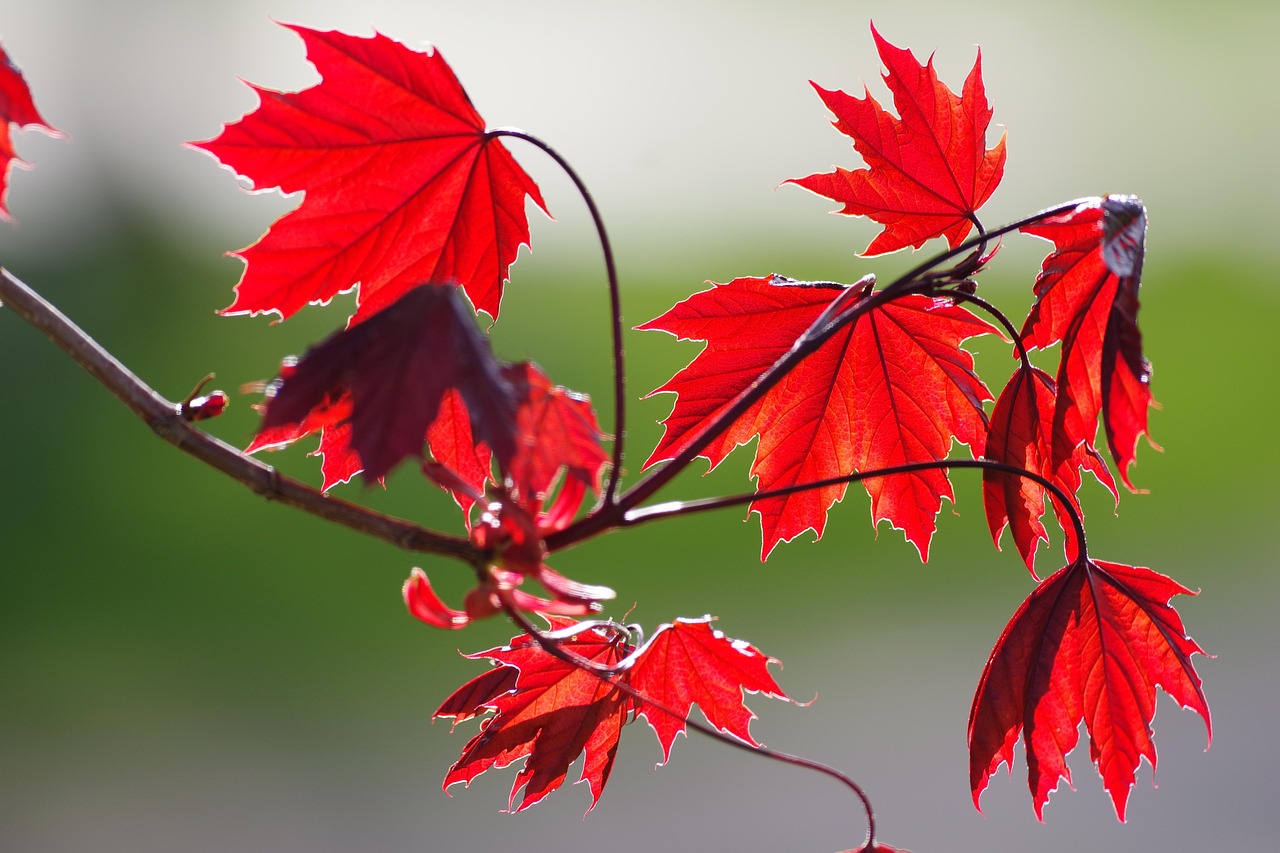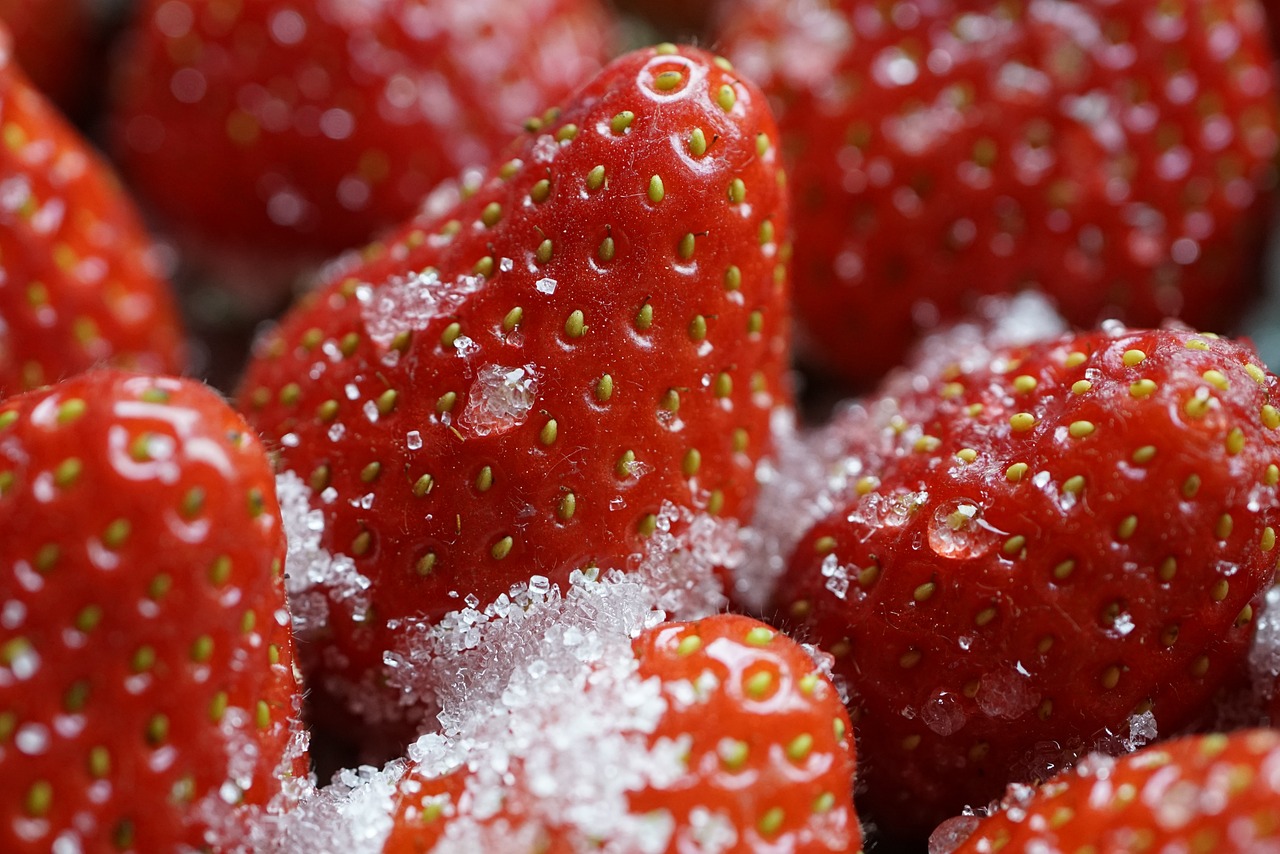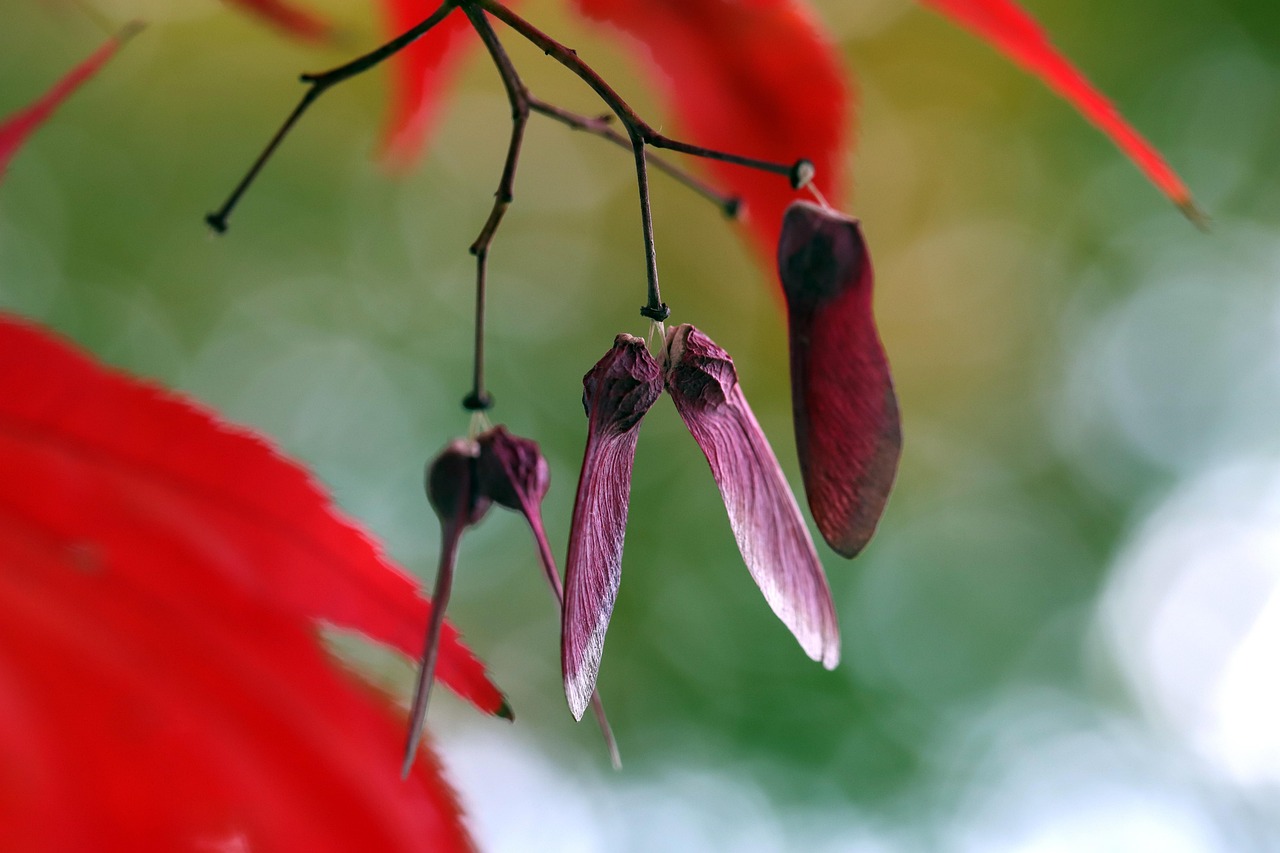Sugar maple tree roots are generally not considered invasive. They tend to grow in a way that is typical for many large trees, spreading out rather than aggressively seeking to overtake nearby areas. However, their root systems can spread widely, which may lead to some complications in certain landscapes.
Understanding Sugar Maple Trees

The sugar maple (Acer saccharum) is a popular tree known for its stunning fall foliage and valuable sap, which is used to produce maple syrup. This tree is native to North America, particularly in the northeastern United States and eastern Canada. It thrives in well-drained soils and prefers moist, fertile conditions. The sugar maple is a large deciduous tree, reaching heights of 60 to 75 feet and often living for over 200 years.
One of the defining characteristics of the sugar maple is its beautiful, vibrant leaves that turn brilliant shades of orange, yellow, and red in the fall. These leaves not only enhance landscapes but also provide essential shade during the warmer months. The tree’s aesthetic appeal makes it a favorite among homeowners and landscapers alike.
Root System Characteristics
The root system of the sugar maple is expansive and can spread out significantly from the trunk. A mature tree can have roots that extend several feet deep and up to three times the width of its canopy. This extensive root system plays a crucial role in the tree’s stability and nutrient uptake.
Typically, sugar maple roots grow horizontally rather than vertically. They are known for their fibrous nature, which helps the tree absorb water and nutrients efficiently. While they are not classified as invasive, their growth can sometimes lead to issues, particularly when planted near structures or other plants.
Potential Challenges with Sugar Maple Roots
Although not invasive, there are some challenges associated with sugar maple roots that homeowners should be aware of:
- Foundation Damage: If planted too close to buildings, sugar maple roots can exert pressure on foundations and sidewalks.
- Competing for Nutrients: The extensive root system can compete with nearby plants for water and nutrients, potentially hindering their growth.
- Pavement Uplift: Roots can cause pavement to lift or crack, creating safety hazards in driveways or walkways.
Comparative Root Systems
To better understand how sugar maple roots compare to other species, consider the following table that highlights root characteristics between sugar maples and other common trees:
| Tree Species | Root Type | Invasive Potential |
|---|---|---|
| Sugar Maple | Fibrous, wide-spreading | Low |
| Willow | Aggressive, shallow | High |
| Black Locust | Deep taproot with lateral growth | Moderate |
This comparison illustrates that while some trees exhibit aggressive root systems that can invade nearby areas or structures, sugar maples maintain a more balanced approach. Understanding these characteristics is essential for proper landscaping decisions and ensuring healthy growth for both the sugar maple and its neighboring plants.
Impact of Sugar Maple Roots on Surrounding Environment
The roots of sugar maple trees can significantly influence their surrounding environment. While they are not invasive in the traditional sense, they can affect nearby plants, soil structure, and water availability. Understanding these impacts is important for anyone considering planting a sugar maple.
Effects on Nearby Plants
When sugar maples are planted in close proximity to other plants, their extensive root systems can create competition for resources. This can lead to several effects:
- Water Competition: Sugar maples require a good amount of water, especially during dry spells. Their roots can absorb moisture quickly, leaving less available for neighboring plants.
- Nutrient Depletion: The roots of sugar maples are efficient at extracting nutrients from the soil. This may limit the nutrient availability for other plants, potentially hindering their growth.
- Shade Effects: As sugar maples grow tall and wide, they provide significant shade. While this can be beneficial for some plants that thrive in lower light, it can be detrimental to sun-loving species.
Soil Structure and Quality
The root system of a sugar maple also plays a vital role in maintaining soil structure and quality. Here are some key points:
- Soil Aeration: The growth of roots helps to aerate the soil. This process allows air to penetrate the soil, which is essential for root health and microbial activity.
- Organic Matter Contribution: As leaves and branches fall from sugar maples, they decompose and enrich the soil with organic matter. This improves soil fertility and promotes healthy plant growth.
- Erosion Control: The extensive root system helps stabilize the soil, reducing erosion, particularly on slopes or areas prone to water runoff.
Root System Adaptations
Sugar maple roots have adapted to their environment in various ways. Understanding these adaptations can provide insight into their growth patterns and ecological significance.
Deep vs. Shallow Rooting
The sugar maple displays a combination of deep taproots and shallow lateral roots. This duality allows them to access water from various soil layers while also spreading out to maximize nutrient absorption:
- Deep Taproots: These roots help the tree access deeper water sources during dry periods, which is crucial for survival.
- Shallow Lateral Roots: These roots spread out horizontally and help absorb surface moisture and nutrients, especially after rain.
Response to Environmental Changes
Sugar maples are known for their resilience in changing environmental conditions. Their root systems can adapt in several ways:
- Water Availability: In times of drought, the roots can extend deeper into the ground in search of moisture.
- Soil Quality: If the soil quality declines, the roots can modify their growth patterns to seek better nutrient sources.
- Compaction Resistance: Sugar maples can tolerate some level of soil compaction, which allows them to thrive in urban environments where soil disturbance is common.
Best Practices for Planting Sugar Maples
If you are considering planting a sugar maple tree, it is essential to follow best practices to ensure its successful growth and minimize any potential negative impacts on surrounding plants and structures.
- Select the Right Location: Choose a site with ample space for the tree to grow without crowding nearby structures or other plants.
- Soil Preparation: Prepare the soil by ensuring it is well-drained and enriched with organic matter to support healthy root development.
- Watering: Provide adequate water during the establishment phase, particularly in dry conditions. Once established, sugar maples are relatively drought-tolerant.
- Monitor Growth: Regularly check the tree’s health and growth patterns. Be prepared to prune or manage surrounding plants to reduce competition.
By following these best practices, you can enjoy the beauty and benefits of a sugar maple while minimizing any potential complications associated with its root system.

Common Misconceptions About Sugar Maple Roots

Despite their many benefits, sugar maple roots are often misunderstood. This section addresses some of the common misconceptions surrounding this tree species and clarifies the nature of its root system.
Myth: Sugar Maple Roots Are Highly Invasive
One prevalent myth is that sugar maple roots are invasive and can damage nearby structures or overwhelm other plants. While their roots do spread out widely, they are not aggressive in the sense that they seek to invade or take over other territories. Instead, their growth pattern is typical for large deciduous trees, focusing on stability and nutrient absorption rather than aggressive encroachment.
Myth: Sugar Maples Require Constant Watering
Another misconception is that sugar maples need constant watering to thrive. In reality, once established, these trees can tolerate periods of drought due to their extensive root systems. They are adapted to survive in a variety of soil conditions, and their roots can reach deep into the ground for moisture when surface water is scarce.
Myth: The Roots Will Ruin My Lawn
Many homeowners worry that planting a sugar maple will ruin their lawns due to root interference. While the roots can extend beyond the tree’s canopy, they typically do not disrupt lawns in a harmful way. Maintaining a proper distance from structures and other plants can alleviate these concerns and promote a healthy lawn environment.
Identifying Healthy Sugar Maple Roots
For those who already have sugar maples planted or are considering planting them, it is essential to recognize signs of healthy root systems. Understanding what constitutes healthy roots can help in nurturing the tree effectively.
Characteristics of Healthy Roots
Healthy sugar maple roots exhibit specific characteristics that indicate the overall well-being of the tree:
- Firmness: Healthy roots should feel firm and robust when gently tugged. Soft or mushy roots may indicate rot or disease.
- Color: Look for light tan or white roots, which signify vitality. Dark or blackened roots can indicate issues such as root rot.
- Growth Patterns: Roots should be spreading outward rather than circling tightly around the base of the tree. Circling roots may restrict growth and stability.
How to Inspect Roots
Inspecting the roots of a sugar maple requires careful attention to avoid damaging the tree:
- Digging Carefully: If you need to check the roots, dig gently around the base of the tree, being cautious not to cut into any roots.
- Assess Root Health: Examine the exposed roots for signs of health, as mentioned previously.
- Replace Soil Gently: After inspection, replace the soil carefully to avoid disrupting the tree’s anchorage.
Managing Sugar Maple Roots in Urban Settings
Urban environments can pose unique challenges for sugar maple trees and their root systems. Proper management is crucial for ensuring that these trees thrive even in less-than-ideal conditions.
Choosing the Right Planting Site
In urban areas, selecting an appropriate planting site is paramount. Consider the following factors:
- Adequate Space: Ensure there is enough space for the tree to grow without competing with sidewalks, buildings, or other structures.
- Soil Quality: Urban soils may be compacted or contaminated. Conduct soil tests to determine if amendments are necessary.
- Water Drainage: Ensure good drainage in the planting area to prevent root rot and other moisture-related issues.
Regular Maintenance Practices
To support healthy growth in urban settings, implement regular maintenance practices:
- Mulching: Apply mulch around the base of the tree to retain moisture and suppress weeds.
- Pruning: Regular pruning helps maintain a healthy structure and encourages proper airflow throughout the canopy.
- Monitoring Soil Moisture: Keep an eye on soil moisture levels, especially during dry spells, and water as needed without overdoing it.
These practices can help mitigate potential issues associated with urban planting while allowing sugar maples to flourish in their surroundings.
Additional Considerations for Sugar Maple Care
In addition to the previously discussed management practices, there are further considerations to ensure the health and longevity of sugar maple trees. These trees can be a valuable asset to any landscape, offering both aesthetic beauty and ecological benefits.
Understanding Pests and Diseases
Like all trees, sugar maples can be susceptible to various pests and diseases. Regular monitoring can help catch issues early:
- Maple Bark Beetle: This pest can cause damage to the bark, leading to stress and vulnerability to diseases. Keep an eye out for signs of infestation and consider appropriate treatments.
- Powdery Mildew: This fungal disease manifests as a white powdery substance on leaves. It can usually be managed with fungicidal treatments and improving air circulation around the tree.
- Root Rot: Excessive moisture can lead to root rot, a serious condition that threatens the tree’s health. Ensure proper drainage and avoid overwatering.
Seasonal Care Tips
Seasonal care is crucial for maintaining the health of sugar maple trees. Here are some tips for each season:
- Spring: Fertilize the tree with a balanced fertilizer to support new growth. Check for any signs of pests or diseases as the weather warms up.
- Summer: Monitor water levels during dry periods. Applying mulch can help retain moisture and suppress weeds.
- Fall: Rake fallen leaves to prevent disease buildup. This is also the best time for planting new trees, as they will have time to establish roots before winter.
- Winter: Protect the base of the tree from extreme cold with mulch. This insulates roots and keeps them warm during harsh conditions.
Environmental Importance of Sugar Maples

Sugar maples play a significant role in their ecosystems. They provide numerous environmental benefits that contribute to a healthy landscape:
- Habitat: Sugar maples serve as a habitat for various wildlife species, including birds and insects. Their leaves provide food for caterpillars, which are essential for many bird species.
- Carbon Sequestration: Like all trees, sugar maples absorb carbon dioxide from the atmosphere, helping to mitigate climate change by reducing greenhouse gases.
- Biodiversity: The presence of sugar maples in a landscape promotes biodiversity by supporting various plants and animal species that thrive in their shade and shelter.
Their ability to adapt to different soil types and environmental conditions makes sugar maples excellent candidates for reforestation and urban planting projects. They not only enhance the beauty of a location but also contribute significantly to ecological health.
Final Thoughts
In summary, sugar maple trees are not invasive in nature, but their extensive root systems do require thoughtful consideration when planting and caring for them. Understanding their growth patterns, potential impacts on surrounding areas, and proper maintenance practices can lead to successful integration into landscapes.
The benefits these trees provide—including stunning fall foliage, shade, habitat for wildlife, and contributions to soil health—make them valuable additions to both urban and rural settings. By following best practices for planting, care, and monitoring, you can enjoy the beauty and benefits of sugar maples while ensuring they thrive in their environment.
The key takeaway is that while care is needed regarding their roots and potential competition with other plants, sugar maples can coexist harmoniously within diverse landscapes when managed appropriately. Their resilience, beauty, and ecological importance make them a worthy choice for anyone looking to enhance their outdoor spaces with robust and vibrant trees.
